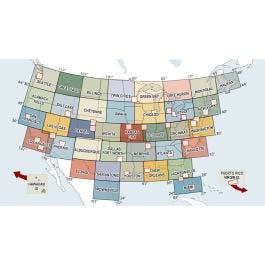

Unfortunately, our experience with trying to order a chart through the user-unfriendly website was so frustrating that we eventually gave up. For $34.20, you should be able to buy a subscription that ships you the most current chart as it is issued over the next two years, saving you $1.80 and that “Aw, nuts, my chart’s out of date” feeling. Barring that, a sectional may be purchased from the FAA (the AeroNav folks at the FAA produce the charts) through the website. If you are fortunate to have a pilot supply shop nearby, it’s easy to stop in and buy what you need. The current, standard price of a sectional chart is $9. For paper chart pilots, the question is the most economical method of maintaining a current collection that covers the right area. For space and cost considerations, operators subscribe to the appropriate WAC charts. Both are supplemented, for areas covered by Class B airspace, with Terminal Area Charts (TAC), which have a scale of 1:250,000.īecause of the scale and lack of surface detail of WACs, their most common use seems to be in Part 135 operations where current charts are required, and VFR charts have to be on board when there is some portion of a flight that is not on an IFR clearance. A current chart or annual chart service that provides updates is, in our opinion, an easy way to comply.Īs it has been almost since Wilbur and Orville, the two main types of VFR charts are sectionals, with a 1:500,000 scale and World Aeronautical Charts (WAC), with a 1:1,000,000 scale. However, they are required by Part 91.103 to become familiar with all available information concerning a flight prior to departure. Part 91 pilots are not required to have current, or any, charts on board.
How to read aeronautical sectional charts update#
If a pilot is routinely buying six or more sectionals, the equation changes to buying an annual subscription offered by one of the companies that print sectionals in spiral-bound volumes and provide an update service to allow the pilot to keep abreast of changes. For a paper-preferring pilot who routinely flies within an area covered by four to six Sectional Aeronautical Charts (sectionals), we think the best approach is to simply purchase a subscription for each. No matter what chart is used, the important factor is making sure that the most current information regarding a proposed flight is easily available-cost is a close second. Reasons include avoiding what can be pricey electronic device updates, a perceived ease in keeping track of the geographic “big picture” beyond the magenta line and not being quite convinced that electronics are infallible, are infallible, are infallible.

Despite all the developments in the world of electronic charts, many pilots still like paper.


 0 kommentar(er)
0 kommentar(er)
